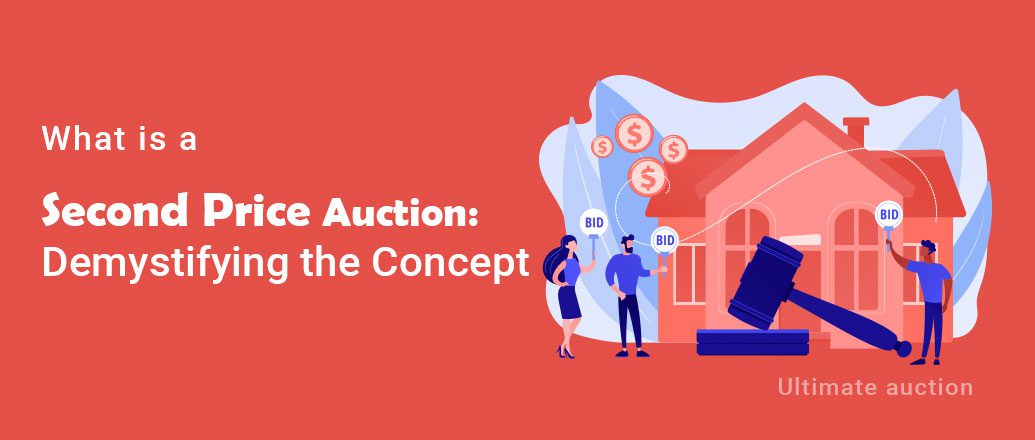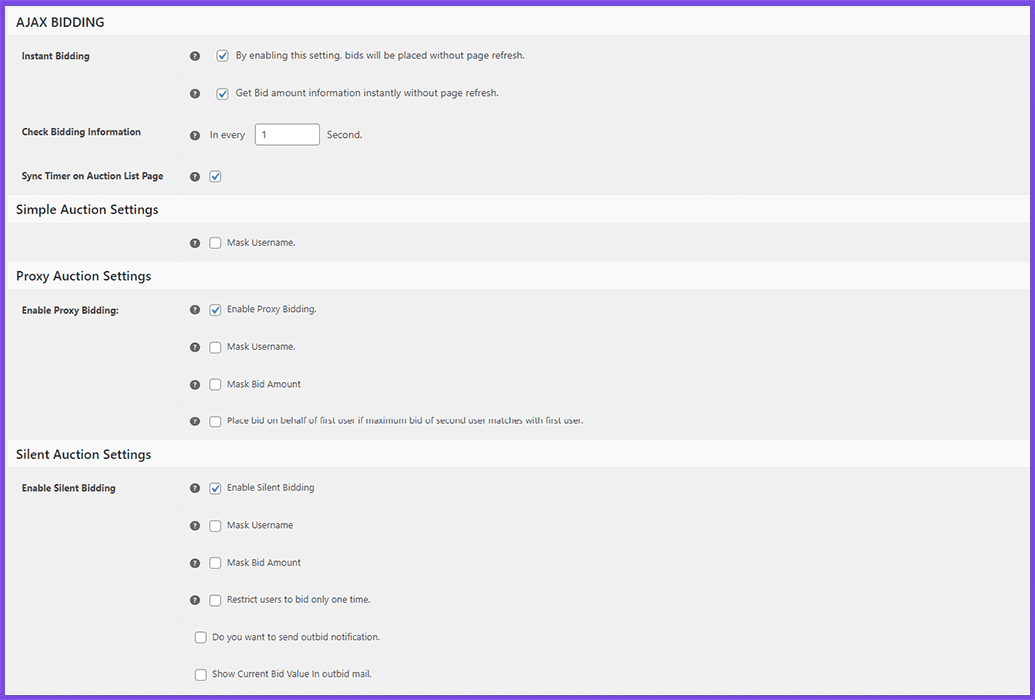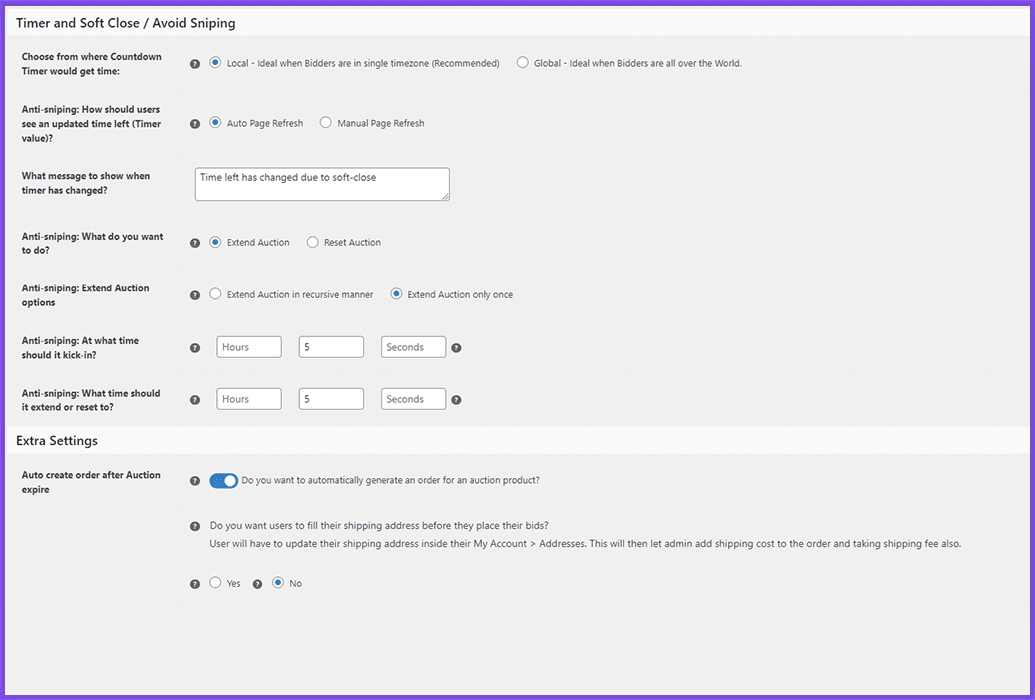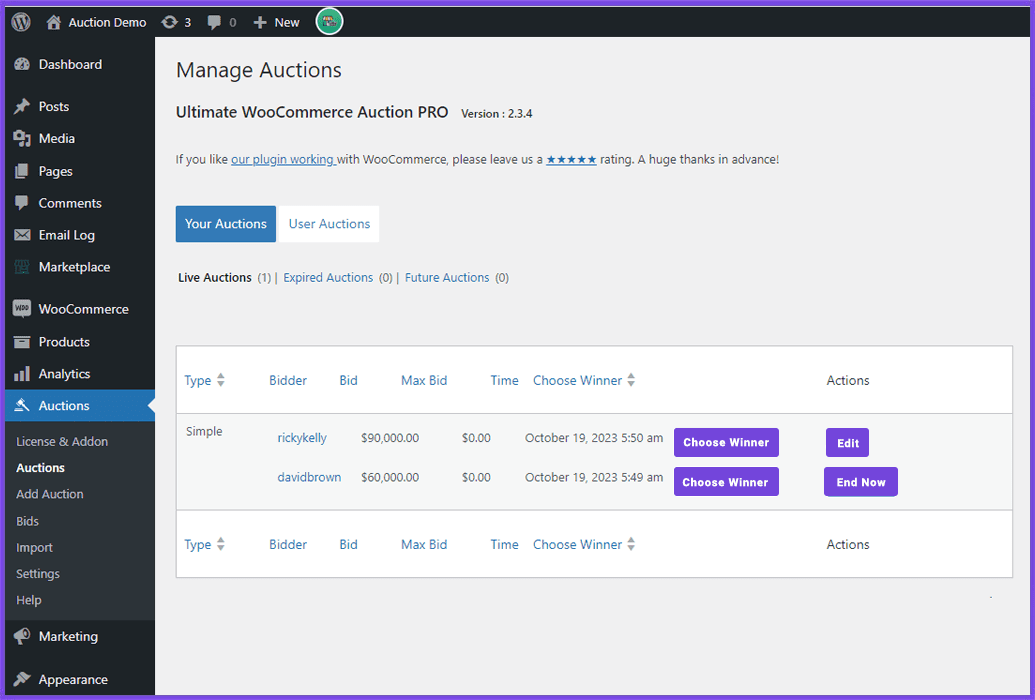



In the world of auctions, the second price auction, often referred to as a Vickrey auction, emerges as a unique and occasionally misunderstood concept. Departing from the norms of traditional auctioning, this intriguing method presents a distinctive approach. Unlike standard auctions where the highest bidder pays their own bid amount, in a second price auction, the winner pays the second-highest bid.
Venture with us into this extensive guide as we demystify the intricacies of this captivating bidding process and its far-reaching implications. The term ‘second price auction’ and ‘Vickrey auction’ are used interchangeably to describe this method. To deepen your understanding, we’ll also provide a brief historical context, shedding light on the origins and evolution of this auction method.
The second price auction, also known as a Vickrey auction, presents a distinctive winner determination process. Rather than the highest bidder paying their own bid amount, this method employs an intriguing twist. The winning bidder secures the item or service on offer, yet their payment mirrors the value of the second-highest bid. This seemingly paradoxical arrangement serves as a financial incentive for participants to bid with utmost honesty, as overbidding can result in a disadvantageous outcome.
To gain a comprehensive understanding of the inner workings of a second price auction and how it differs from traditional bidding systems, it’s essential to explore the concept of sealed bids.
In a second price auction, the process begins with bidders submitting their bids privately, away from the prying eyes of their competitors. Unlike open auctions where participants are aware of others’ offers, this secretive nature adds an element of strategy to the bidding process.
Once all bids are submitted, the auction platform steps in to unveil the highest bid. This is the thrilling moment where participants discover which bid emerged as the most substantial. However, here’s the twist that defines the second price auction: the winning bidder isn’t required to pay their own bid amount. Instead, they are charged the value of the second-highest bid.
This unique structure encourages bidders to be forthright in their valuation. Why? Because overbidding, or submitting a bid significantly higher than what they are willing to pay, becomes financially disadvantageous in this setup. The incentive is to bid the true maximum price one is willing to offer, as this increases the chances of winning while minimizing the cost.
In essence, a second price auction is a brilliant mechanism that rewards honesty and efficiency in resource allocation. It fosters an environment where participants aim to reveal their genuine intentions through their bids, resulting in a fair and equitable distribution of auctioned items.
So, that’s how a second price auction works, offering a fresh perspective on the dynamics of competitive bidding.
To grasp the concept of a second price auction further, let’s delve into real-life scenarios where this bidding method is employed.
In the realm of online advertising, the second price auction takes center stage. Imagine a bustling digital marketplace where advertisers are fervently competing for ad space on a highly popular website. Each advertiser enters the arena armed with their maximum bid, a figure that reflects the utmost value they are willing to pay for prime advertising. Importantly, these advertisers remain entirely oblivious to their competitors’ offers.
As the auction draws to a close, the highest bidder emerges victorious, claiming the coveted ad space. However, here’s where the beauty of the second price auction unfolds: the winning advertiser doesn’t have to part with their entire bid amount. Instead, they pay an amount equivalent to the second-highest bid, an amount set by their closest rival in the fierce bidding war.
This ingenious approach ensures that advertisers don’t overextend their budgets, paying a price that aligns closely with the true market value of the ad space.
Beyond the digital realm, second price auctions find applications in the art world. Picture an elegant art gallery, where collectors and art enthusiasts gather to bid on a masterpiece. Each bidder arrives with a carefully guarded maximum bid, keeping their valuation a well-kept secret.
As the auctioneer’s gavel descends and the highest bid becomes evident, the winner is declared. Yet, in the true spirit of a second price auction, this victorious bidder isn’t required to pay their full bid amount. Instead, they contribute an amount equal to the second-highest bid, making their acquisition more cost-effective.
This artful application of the second price auction in the world of fine art serves to ensure that collectors secure prized pieces without overpaying.
Government procurement processes are often intricate, and second price auctions offer a transparent and cost-efficient approach. In these auctions, suppliers submit sealed bids for government contracts, such as bidding on federal construction projects or the provision of goods and services. The bid with the highest value secures the contract, but the winning supplier is paid based on the second-highest bid’s price.
This encourages competitive pricing while ensuring taxpayers get value for their money. Additionally, it deters collusion among bidders, as there’s no incentive to inflate prices artificially. Second price auctions in government procurement foster fair competition, leading to better deals for both the government and its citizens.
By utilizing a WordPress auction plugin, you can seamlessly implement and manage this unique auction format. We’ll walk you through all the steps which include the complete workflow.
Before purchasing the WordPress auction plugin plugin, it’s essential to explore the plugin’s plans and features. Many auction plugins offer both free and premium versions. First, go to auctionplugin.net and compare the options (Free, Starter, Business, Unlimited) considering your specific needs and budget.
The WordPress Auction plugin provides advanced features like Auto-debit functionality, buyer’s premium fee, offline and online payments, SMS notifications, and many more features, which can enhance the functionality of your auctions.
If you opt for a premium version, complete the purchase process. Please review the attached YouTube video for the purchase process. After purchasing the WordPress Auction plugin, you will get the PRO plugin zip. Afterward, install the premium plugin by uploading it to your WordPress site. Please review this document for how to install the Pro plugin and activate the license key.
Now comes the crucial part – configuring the auction plugin to run auctions. Follow the plugin’s instructions to set up the parameters for your auctions. After activation of the auction plugin, go to the “Auctions” menu in your WordPress dashboard and select “Settings” to configure the auction settings.
Below is some useful configuration that might be useful to set up the auction functionality. Configure these settings according to your specific needs.
AJAX Bidding : AJAX bidding allow users to place bids on items in real-time during online auctions. It enables seamless, dynamic updates of bidding information without requiring the entire web page to reload, providing a more interactive and responsive user experience in online auctions.
Proxy Bidding : Proxy bidding, commonly used in online auctions, allows users to set a maximum bid amount they’re willing to pay for an item. The system then automatically places incremental bids on their behalf, increasing the bid until it reaches the maximum set by the user. This ensures that the user remains the highest bidder, up to their predefined limit, without having to manually monitor and adjust their bids during the auction.
Silent Bidding : It allows bidders to submit their bids privately and anonymously and Users cannot see other bid amounts.

Soft-Close : When an auction is about to end and a bid is placed within a specified time before the scheduled closing time, the auction is automatically extended for an additional period. This prevents last-second sniping and gives all participants an equal opportunity to place their bids, ensuring a fair and competitive bidding process.
Auto create order : When the auction expires, the order created automatcally for the highest bidder. This simplifies the process by minimizing manual input, improving efficiency, and ensuring accurate transaction records for both buyers and sellers.
Bid Increment : It’s a predetermined value that ensures gradual and competitive bidding, preventing participants from making tiny incremental bids. The bid increment is typically set by auction organizers to maintain fair and efficient bidding processes.

Before launching live auctions, it’s advisable to conduct test runs to ensure everything functions smoothly. Simulate auctions with dummy data to identify and resolve any potential issues. Test user registration, bidding, and payment processes to provide a seamless experience for your participants.
The WordPress Auction plugin offers video tutorials and documentation to help you understand how the plugin works. Visit the plugin’s YouTube channel to access these resources. Learning the ropes through these guides can streamline your auction management process.
Once you’re confident in the setup and have addressed any issues, it’s time to go live. Create new auctions using the WordPress Auction plugin, Announce your auctions, and promote them to your target audience. With transparent pricing and efficient resource allocation, you’re likely to attract eager bidders.
When admin launches a new auction, many bidders have placed a bid on the auction products with different bid values. From the WordPress dashboard, go to the Auctions menu -> Bids tab. Here, the admin can manage and view information about bidders and their bids.
Admin needs to also manage the auction products. From the WordPress dashboard, go to the Auctions menu -> Auctions tab. Here, the admin can edit, delete and end auction products.

As your auctions progress, Monitor bid activity and keep a close eye on the proceedings. When an auction ends, the highest bidder wins the product. After that, the winner needs to checkout the auction product, make payment, and place an order. The WordPress Auction plugin supports all the payment methods on the checkout page which are supported by the Woocommerce plugin.
Ensure payments are processed correctly, and address any inquiries or concerns from participants promptly. Continuous optimization based on user feedback and auction performance can enhance the success of your auctions.
By following these steps and effectively using the WordPress Auction plugin, you can seamlessly implement and manage auctions on your website. This approach not only enhances user engagement but also provides a fair and transparent platform for bidding.
Auction workflow refers to the sequence of steps and processes involved in conducting an auction. This includes tasks such as item cataloging, setting auction parameters, bidder registration, bidding, bid monitoring, and finalizing the sale. An efficient auction workflow ensures a smooth and organized auction process from start to finish.
Exploring the world of second price auctions reveals both enticing benefits and potential pitfalls. Let’s explore them.

Incentivizes Honest Bidding: Bidders are encouraged to reveal their true valuations, leading to fair pricing and resource allocation.
Transparency: The auction’s outcome is clear and minimizes information asymmetry among participants.
Prevents Overpayment: Winners pay an amount equal to the second-highest bid, preventing excessive costs.
Discourages Collusion: Reduced incentive for bidders to collude or manipulate prices, promoting fair competition.
Winning a second price auction isn’t solely about making the highest bid; it’s about strategic bidding and understanding the dominant strategy in play. In this unique auction format, where the highest bidder secures the prize but pays the second-highest bid, your approach matters.
Dominant Strategy: The key to success lies in bidding your true maximum value. Since you only pay the second-highest bid, overbidding is counterproductive. The dominant strategy in a second price auction is to bid precisely what you believe the item or service is worth to you. This tactic ensures you secure the prize without paying more than necessary. To maximize your chances of winning, consider these tips:
By adhering to these strategies and understanding the dominant approach, you can increase your likelihood of winning a second price auction while keeping costs in check.
In conclusion, a second price auction presents a distinctive approach to bidding that challenges conventional norms. It stands as a testament to the power of transparency and fair resource allocation in auction dynamics. This innovative concept has found applications in various domains, from online advertising to government procurement and art auctions.
If you’re considering implementing a second price auction on your website, explore this top-rated auction website builder that can simplify the process. Its auction script can help you leverage the advantages of second price auctions, creating a win-win scenario for both you and your bidders.